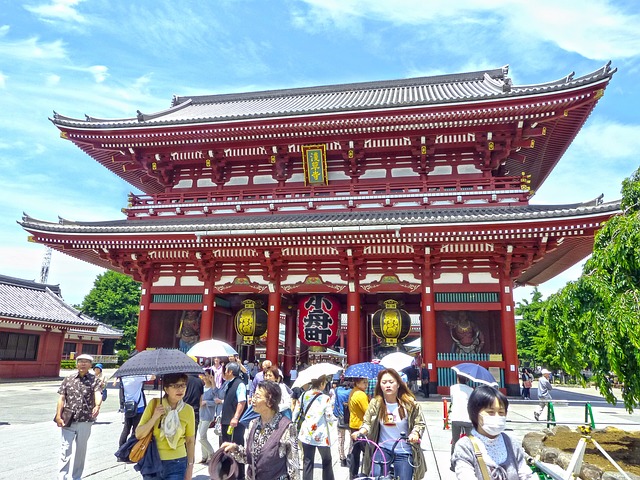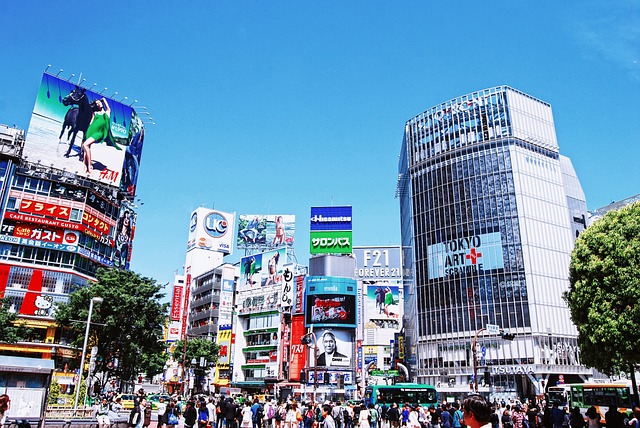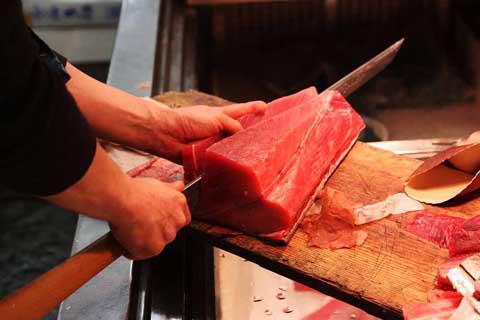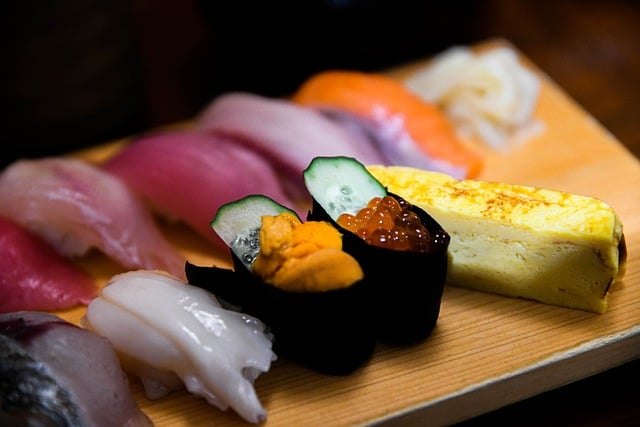The allure of Tokyo is undeniable, especially since it offers museums and attractions, food, nightlife, and music.
Here are a few of the most popular sights with their prices:
- Senso-ji Temple (Free)
- TeamLab Borderless Museum for ¥3,800
- Meiji Shrine (Free)
- Odaiba (Free)
- Ueno Park (Free)
- Tokyo Skytree for ¥2,100–¥3,100
- Akihabara (Free)
- Harajuku Takeshita Street (Free)
- Shibuya Crossing (Free)
- Tsukiji Outer Market (Free)
- Tokyo Tower for ¥1,200–¥3,000
- Ginza Shopping District (Free)
- National Museum of Nature and Science for ¥630
Two of the most common tourist sites are Tokyo Tower (an immense structure somewhat resembling the Eiffel Tower) and Tokyo Skytree (another immense structure somewhat resembling Seattle's Space Needle). Both of these are great to visit and appreciate the incomprehensible size of Tokyo itself. However, both of these locations sell tickets to their respective tops for a lofty fee. But keep in mind that they are just 2 of the best things to do in Tokyo, so keep going for more ideas and inspiration.
The insider's way to see the city from the top of the world is to go to the Tokyo Metropolitan Government Building in Shinjuku. This slightly-less-pretty building has an observation deck on its 45th floor (with free admission!). From that high up, you can see for miles in every direction, making this one of the best tourist spots in Tokyo without a price tag. It's a great place for photos - as are many other great places in Tokyo to take photos.
For a cultural adventure, visit Asakusa, which hosts Senso-ji, Tokyo's oldest temple. With its beautiful architecture, it makes a wonderful backdrop for photos as well as a fascinating cultural experience. Many Japanese people journey to Asakusa to perform Buddhist rituals at the temple. Be prepared to navigate seas of people as you walk down Nakamise-dori, the street leading up to Senso-ji, lined by shops and eateries.
For a break from the fast-paced, highly crowded areas of Tokyo, visit Rikugien Garden. A short walk from Komagome station on the Yamanote line (one of Tokyo's most popular railroad lines), Rikugien is a nice, quiet relief from the metropolis. For a small fee, you can explore the garden for at least an hour or two.
A trip to Tokyo would not be complete if you didn't make a stop at the world's busiest crosswalk and the world's busiest Starbucks. In Shibuya, you can actually go into the world's busiest Starbucks, buy a drink, walk up to the second floor, and watch the show as up to 2,500 people cross the intersection every time the light changes-during rush hour, at least. This phenomenon is referred to as the "Shibuya Scramble." Watching so many people cross paths in every direction and still find their way is remarkable. It speaks to the peace and order of Tokyo, which is unwritten but universally understood by its millions of residents.
In 2020, Tokyo will host the Summer Olympic Games. The city is preparing, and huge crowds can be expected. Check out this guide to tickets to the Olympics in Tokyo for more information.
One popular activity in Tokyo is karaoke. In nearly every area with shopping and restaurants, you can find a Karaoke business. Unlike American karaoke, this is not a bar where people can sing in front of random strangers. Instead, a group of friends can rent out a soundproof room in the building. Typically, these are dark, small booths with a television, karaoke machine, and a large table for drinks and food. There, you can sing and celebrate with your friends in a more private setting.
If you are lucky enough to travel to Tokyo during cherry blossom season, which runs for about two weeks around the beginning of April, make some Japanese friends, and have a traditional ohanami ("flower viewing") picnic. Lay down a tarp, bring some snacks, sashimi, tea, and whatever else you'd like, and spend time with friends until dark, enjoying the beautiful cherry blossom trees.
The summer also offers many traditional festivals. You are likely to see many Japanese dressed in traditional yukatas. Several of these are fireworks festivals. The Tokyo skyline is an incredible backdrop for these events, and they draw over a million viewers every year.
If you have kids, Disney also has a few theme parks in the area: Tokyo Disneyland and Disney Sea. And finally, check out this quick guide to Tokyo.
If you're looking for a great day trip, why not check out some cute animals? Read this great article about visiting Fox Village in Japan as a day trip.
Museums and Attractions:
 Tokyo stands out for its impressive museums and notable landmarks. This iconic city is filled with recognizable landmarks and world class museums including the Meiji Shrine, the Sensō-ji Temple, and the Tokyo Skytree.
Tokyo stands out for its impressive museums and notable landmarks. This iconic city is filled with recognizable landmarks and world class museums including the Meiji Shrine, the Sensō-ji Temple, and the Tokyo Skytree.
Music:
The music scene in Tokyo is popular and draws a crowd. The music scene features both national and international artists and the music style is as eclectic as the city itself. You'll find many underground venues, vintage record stores, and local bars that have each created their own niche.
Shopping:
 Shopping here is an experience not to be missed. The city is known for its electronics, anime products, and trendy fashion brands. Many neighborhoods are also shopping districts with malls or markets throughout. Prices can be steep, but products are generally high quality. For some of the city's best shopping, head to Shinjuku, Shibuya, or Ginza.
Shopping here is an experience not to be missed. The city is known for its electronics, anime products, and trendy fashion brands. Many neighborhoods are also shopping districts with malls or markets throughout. Prices can be steep, but products are generally high quality. For some of the city's best shopping, head to Shinjuku, Shibuya, or Ginza.
A nice way to explore destinations in Tokyo is with local tours that last just a few hours. This way you can see as much as possible in an efficient way with knowledgable guides. Prices vary by the type of activity or tour, the dates, and the size of the group. Here are a few of the highest rated tours by previous visitors:
- Private Walking Tour in Tokyo - Perfect for First-Time Visitors for $133 details
- Akihabara Tailor-made Private Tour for Anime Fans for $137 details
- Experience all of Japanese culture and Japanese food experience classes "origami, udon, Japanese food, green tea, calligraphy" in 4 hours for $96 details
 Tokyo Fish Market
Tokyo Fish Market


 Tokyo stands out for its impressive museums and notable landmarks. This iconic city is filled with recognizable landmarks and world class museums including the Meiji Shrine, the Sensō-ji Temple, and the Tokyo Skytree.
Tokyo stands out for its impressive museums and notable landmarks. This iconic city is filled with recognizable landmarks and world class museums including the Meiji Shrine, the Sensō-ji Temple, and the Tokyo Skytree. Shopping here is an experience not to be missed. The city is known for its electronics, anime products, and trendy fashion brands. Many neighborhoods are also shopping districts with malls or markets throughout. Prices can be steep, but products are generally high quality. For some of the city's best shopping, head to Shinjuku, Shibuya, or Ginza.
Shopping here is an experience not to be missed. The city is known for its electronics, anime products, and trendy fashion brands. Many neighborhoods are also shopping districts with malls or markets throughout. Prices can be steep, but products are generally high quality. For some of the city's best shopping, head to Shinjuku, Shibuya, or Ginza.
 Budget Your Trip is all about finding out how much everything costs so that you can travel cheaper and longer. Created by avid travelers Laurie and Bryan, our goal is to help you plan your next trip on the right budget. With average daily travel costs that are calculated from the budgets of real travelers, plus an analysis of hotel and tour prices, you can find out how much money you need to plan your next adventure. We also have plenty of travel advice, accommodation reviews, and activity suggestions.
Budget Your Trip is all about finding out how much everything costs so that you can travel cheaper and longer. Created by avid travelers Laurie and Bryan, our goal is to help you plan your next trip on the right budget. With average daily travel costs that are calculated from the budgets of real travelers, plus an analysis of hotel and tour prices, you can find out how much money you need to plan your next adventure. We also have plenty of travel advice, accommodation reviews, and activity suggestions.
Tokyo is an amazing city, but you can expect to pay dearly for most things. There are plenty of affordable and delicious restaurants around though.